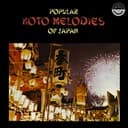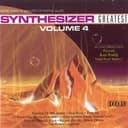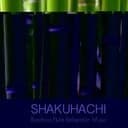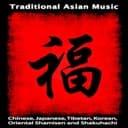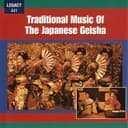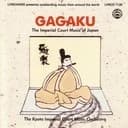Historical Origins and Cultural Significance in Japanese Music
The hirajoshi scale represents one of the cornerstone tuning systems in traditional Japanese music, with documented use extending back to the Edo period (1603-1868) and earlier court music traditions. This pentatonic framework emerged from the sophisticated modal systems employed by gagaku court musicians and Buddhist monks performing shakuhachi meditation pieces. The name "hirajoshi" translates approximately to "flat foundation" or "level tuning," reflecting the scale's grounded, stable character that distinguishes it from other Japanese pentatonic modes. Traditional instruments including the 13-string koto, shakuhachi bamboo flute, and three-string shamisen frequently utilize hirajoshi tuning for both classical repertoire and folk music transmission. The scale's interval pattern (2-1-4-1-4 semitones) generates harmonic relationships fundamentally different from Western diatonic systems, producing the instantly recognizable "Japanese sound" that resonates across global musical consciousness. Ab Hirajoshi maintains this cultural authenticity while offering a key center particularly useful for compositions requiring the darker, richer register that Ab provides compared to brighter keys. Modern preservation efforts by institutions like Tokyo University of the Arts and the National Theatre of Japan ensure hirajoshi remains vital to Japanese musical identity, while contemporary artists incorporate it into anime soundtracks, video game scores, and fusion genres that bridge East and West.
Distinctive Musical Character and Emotional Expression
Ab Hirajoshi delivers a contemplative, introspective sonic quality characterized by its minor third (Cb) and flattened sixth (Fb), creating melancholic beauty without the harmonic tension of Western minor scales. The large interval leaps—particularly the augmented third between Bb and Eb—produce the characteristic "gapped" quality typical of Japanese pentatonic scales, distinguishing it from the smoother melodic contours of Western pentatonics. This intervallic architecture evokes imagery of zen gardens, ancient temples, cherry blossoms drifting in spring winds, and traditional tea ceremonies, making it invaluable for film composers scoring Asian cultural settings or emotional moments requiring subtle depth. The absence of semitone intervals (except the Bb to Cb step) eliminates leading-tone tension, allowing melodic phrases to float without Western harmonic resolution expectations. Compared to the brighter Ab Yo scale or the darker Ab Iwato scale, Ab Hirajoshi occupies a balanced, versatile emotional territory that accommodates both contemplative meditation and gentle storytelling. Musicians describe its quality as "wistful," "nostalgic," and "quietly profound"—ideal for meditation music, ambient compositions, cinematic underscoring, and any context requiring introspective beauty. The scale's pentatonic nature (five notes per octave) ensures that nearly any note combination produces consonance, encouraging melodic experimentation while preserving authentic Japanese character. In the key of Ab, this scale gains additional warmth and depth, making it especially effective for piano, guitar, and synthesizer compositions seeking rich, contemplative tonalities.
Practical Applications Across Modern Musical Contexts
Contemporary composers extensively employ Ab Hirajoshi in anime soundtracks (Studio Ghibli films frequently feature hirajoshi-based themes transposed to various keys), video game music (particularly RPGs and action-adventure games set in Japan-inspired fantasy worlds), and world music fusion projects blending Asian and Western influences. The scale appears prominently in meditation and wellness music applications, where its calming pentatonic structure creates peaceful, tension-free soundscapes ideal for yoga, mindfulness practices, and therapeutic contexts. Jazz musicians exploring modal improvisation incorporate Ab Hirajoshi for its exotic timbral color, often juxtaposing it with contrasting scales like Ab Blues or modal alternatives to create dynamic harmonic movement. Film and television composers rely on Ab Hirajoshi to instantly establish Japanese cultural settings—a few carefully placed notes immediately transport audiences to Tokyo's neon-lit streets, Kyoto's historic temples, or rural Japanese countryside. Electronic music producers incorporate hirajoshi patterns into lo-fi hip-hop beats, chillwave atmospheres, and ambient techno productions, where its pentatonic simplicity provides melodic interest without complex harmonic progressions that might disrupt the genre's aesthetic. The scale functions effectively over sustained Ab minor or Ab major drone tones, and guitarists appreciate how its five-note structure creates accessible, memorable riffs that sound authentically Japanese without requiring advanced technical knowledge of traditional Japanese performance practices. Piano compositions in Ab Hirajoshi benefit from the key's natural richness and the scale's inherent consonance, allowing composers to craft evocative pieces that honor traditional Japanese musical aesthetics while remaining accessible to Western-trained musicians and contemporary audiences.
Comparison to Related Japanese and Western Scales
Understanding Ab Hirajoshi's relationship to other scales clarifies its unique position within both Japanese and global music theory. Within the Japanese pentatonic family, the Ab In scale shares the contemplative aesthetic but employs different intervals that produce distinct melodic possibilities, while the Ab Iwato scale creates a more dramatic, darker atmospheric quality through its own unique interval configuration. The Ab Kumoi scale offers yet another Japanese pentatonic alternative, each with distinctive character and traditional applications. Comparing Ab Hirajoshi to Western pentatonic scales reveals fundamental structural differences: while Ab Minor Pentatonic (Ab-Cb-Db-Eb-Gb) emphasizes blues-rock vocabulary with its characteristic intervals, hirajoshi's Bb and Fb create entirely different melodic trajectories that immediately signal Japanese musical identity. The augmented third interval (Bb to Eb) and the distinctive Fb to Ab leap produce the scale's signature character that differentiates it from all Western pentatonic systems. Musicians familiar with Western major and minor systems can compare Ab Hirajoshi to Ab Major to understand how selective pitch elimination creates the pentatonic framework, though hirajoshi's intervals don't derive directly from major scale subsets. These systematic comparisons help Western musicians internalize hirajoshi's internal logic while maintaining respect for its cultural origins and traditional performance contexts. The scale's transposition to Ab makes it particularly compatible with jazz harmony, classical piano repertoire, and contemporary production workflows that favor flat key signatures, expanding its practical utility beyond purely traditional Japanese musical applications.
